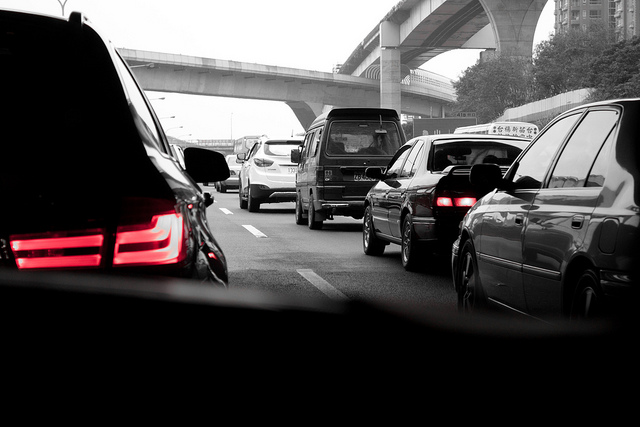Dev Diary posts are made to teach game development through specific examples from my latest project: Highways & Byways.
Just here for Highways & Byways updates? Click here.
Most board game mechanics will not work as well as you intend them to. Good board game developers need to know when to drop mechanics and when to refine them. It’s not an exact science. My experiences with developing Highways & Byways this week have made me want to talk about this.
Need help on your board game?
Looking for more resources to help you on your board game design journey?
A little bit of background information, as well as an update. I’m continuing early play tests of Highways & Byways. The core game works, but it lacks a substantial challenge and doesn’t have much interaction between players. I’ve been playing with a new mechanic called “traffic.” Players could place road closures and travel delays on roads near their opponents to slow them down. It was about as fun as actual traffic. Back to the drawing board!

As a general rule of thumb, if a mechanic breaks theme immersion, is fiddly by necessity, or doesn’t mesh with existing mechanics then save yourself the time and drop it. If a mechanic is clumsy in execution but seems like it could be fun, continue testing with it, but always remember that you may have to drop it later.
I dropped the traffic mechanic because it was incorrigibly awful. It was fiddly, requiring players to place a lot of pieces. It would require a ton of rules to keep players from simply boxing others in with traffic. Not to mention, it makes players “traffic gods” with the ability to spawn traffic jams across the country WITH THEIR MINDS. My brother and I looked at each other and shook our heads. I dropped the traffic mechanic, upgraded to the next version of the game, did a little bit of housekeeping, and created a new mechanic in its place. It’s called the construction mechanic, which is randomly generated. It’s clumsy, but early tests show promise. I might end up in the same situation a week from now, but such is the iterative nature of game development.
With this mini-failure in mind as an example, what can game devs learn about spotting and dropping bad mechanics? It bears repeating that board game development involves tons of experimentation. What you expect to work probably won’t, and sometimes ridiculous ideas wind up being brilliant. So it goes. You’ll have to generate a ton of ideas to make a great game and bury most of them. All things equal, fewer mechanics are better. You want game complexity to arise from interactions, not mechanics or rules.
In the spirit of rapid iteration, then, how do you churn through ideas to improve your odds of reaching the good ones quickly? You have to drop bad mechanics early. Save yourself the time. Try something else. To me, trying to force a bad mechanic is like trying to force a key into a door. It’s a great way to break a key.

Here are five signs of a bad mechanic. Any of the following could ruin a mechanic. Fortunately, the traffic mechanic touches on all of these, which makes it a fantastic example for the signs below:
Sign 1: the mechanic breaks immersion or tone. The Highways & Byways traffic mechanic implied, through its very existence, that players have the ability to change traffic patterns halfway across the country. That makes no sense and it breaks immersion. That alone was reason enough to get rid of a mechanic. The same can be said of cutthroat take-that person-versus-person mechanics in a sunshiny game – it’s just off-putting.
Sign 2: the mechanic conflicts with the core engine. The Highways & Byways game depends upon the relatively unrestricted ability of players to move around the board. The traffic mechanic led to players blocking off roads really close to others. That slowed down travel time just about every turn. It’s like making Sonic the Hedgehog slow. If you make a game about building skyscrapers, this is equivalent to making a mechanic around gathering building permits.
Sign 3: the mechanic conflicts with other tested and liked mechanics. Early game card drafting is working beautifully in Highways & Byways. It gives you a chance to strategize, interact with your opponents, and write your destiny. The traffic mechanic made certain more isolated roads in the midwest and mountain states really unattractive, since there were fewer ways in and out. That meant your opponents could box you in with traffic, which made the more connected northeast more attractive. It upset the whole drafting balance.
Sign 4: the mechanic requires fiddly tracking. The traffic mechanic required extra pieces to be scattered across the board. In this case, it wasn’t so bad, but in general, you want to have to track as little data as possible. For example, if you’re making a fighting game with Life, Stamina, and Endurance trackers, consider simplifying that into one piece of data, such as HP.
Sign 5: the mechanic has to be reigned in with a bunch of rules. I tried making the traffic mechanic work, by saying things like “you can’t place two traffic pieces in a row” and “it’s gotta be three spaces away from each person” and “you can’t box opponents in.” It felt like a Rube Goldberg machine. You don’t want to stress out your players by making them remember too much. Rules come with a sort of cognitive overhead which you want to minimize for the sake of accessibility if at all possible. Games are always misunderstood when played for the first time. More rules increase the chances of devastating misunderstandings. Misunderstandings decrease the chance of getting that second or third play. Failure to get to play #2 or #3 – no matter how good your game is – damages the chances of selling your game.
Key Takeaways for Game Devs
- Most mechanics you experiment with are not going to work.
- Make your game function with the fewest possible mechanics.
- You want game complexity to arise from interactions, not mechanics or rules.
- If a mechanic is bad, drop it early, save yourself some time, and try something else.
- If a mechanic breaks your theme immersion or doesn’t match your game’s intended tone, drop it.
- If a mechanic conflicts with your game’s core engine, drop it.
- If a mechanic conflicts with other game mechanics that you’ve already tested and that you like, drop it.
- If a mechanic requires a lot of fiddly pieces for tracking, drop it.
- If a mechanic requires a lot of rules or explanations, drop it.
- If a mechanic shows potential, keep it and refine it. Remember that you might have to drop it later.
Most Important Highways & Byways Updates
- I completely dropped the experimental traffic mechanic. It was as fun as actual traffic.
- I leveled up to the next version of the game: SR03.
- I introduced a new mechanic called construction in SR03.
- When I mentioned housekeeping above, this is what I’m referring to. I’d love to go into more detail about the following later, but that’s out of the scope of this article:
- Simplifying road names
- Cleaning up sloppy board design
- Creating postcard style cards





One thought on “Spotting and Dropping Bad Mechanics”